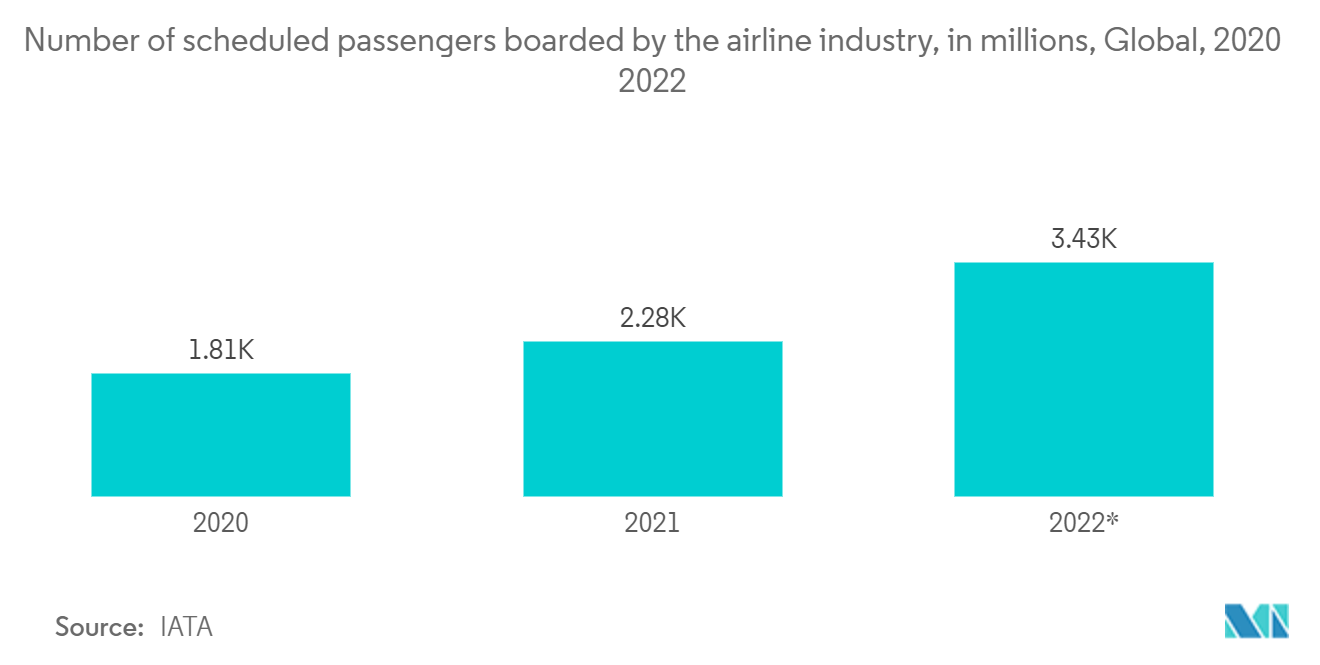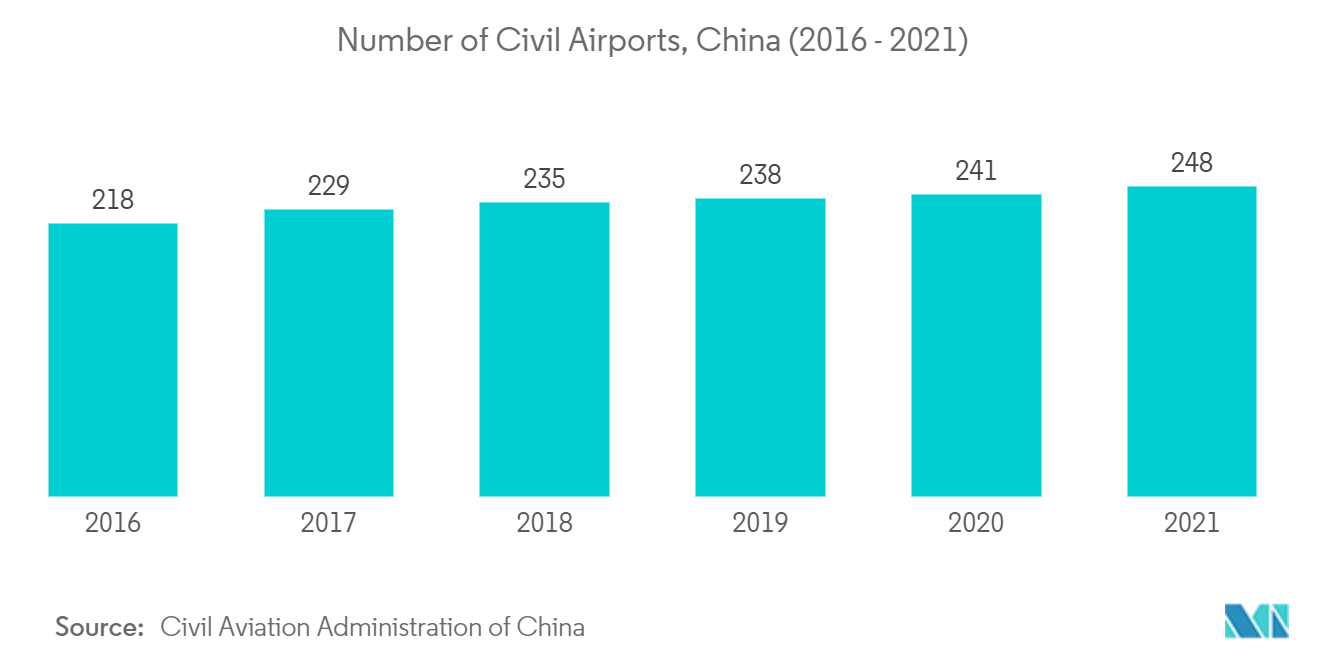Market Trends of APAC AMH Industry
This section covers the major market trends shaping the APAC Automated Material Handling Market according to our research experts:
Airports to Hold a Dominant Market Share
- Several countries realize the importance of investing in airports, as passengers are more likely to spend time and money in a pleasant and stress-free ambiance. The use of conveyors and sortation systems in major and small airports effectively reduces several inconveniences, from check-in to onboarding. This provides customers with a hassle-free experience.
- India and China are major contributors to the aviation industry developments in the region, owing to increasing per capita GDP and domestic air connectivity. For instance, according to the ICAO, Asia Pacific recorded 70% of the domestic traffic share.
- The Chinese aviation market is expected to witness significant growth over the next few years, as its three largest airlines, such as Air China, China Southern, and China Eastern, have ambitious fleet plans that will put their sizes at the top of airlines globally. China's major airports in Shanghai and Beijing are also undergoing major expansion plans.
- According to the Chinese Tourism Outbound Research Institute, by the end of 2030, the number of outbound trips made by Chinese travelers is expected to reach approximately 400 million, and Chinese tourists alone are likely to account for a quarter of international tourism. To ensure adequate support for such growth, airports need to have advanced systems. This is expected to impact the market's growth positively over the forecast period.

China to Hold Significant Market Share
- China has been a prominent contributor to the growth of the AMH market in the Asia Pacific region. The increasing demand for AMH products across industries, such as manufacturing, automotive, and e-commerce, is positively boosting the market's growth.
- China has a vast population and pursues an industrial policy. Measured on the PPP basis, the country became the world's largest economy and exporter, and trader during the current decade. The country is currently passing through the transition state of being manufacturing- and construction-led economy to a consumer-led economy.
- The ten-year plan, introduced in May 2015, is the government's bid to shift the industries up to the medium-high end of the global value chain and foster several advanced manufacturing clusters.
- With the adoption of automation in manufacturing, China is expected to cut manufacturing costs by 30% by 2025. The dearth of skilled labor, complicated by the one-child policy and an aging workforce, requires job activities to be eased to maintain productivity at work.


